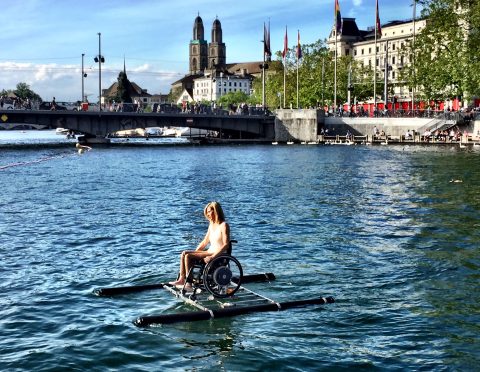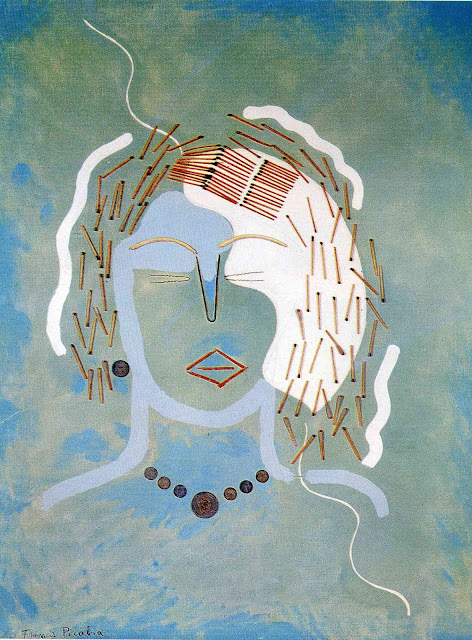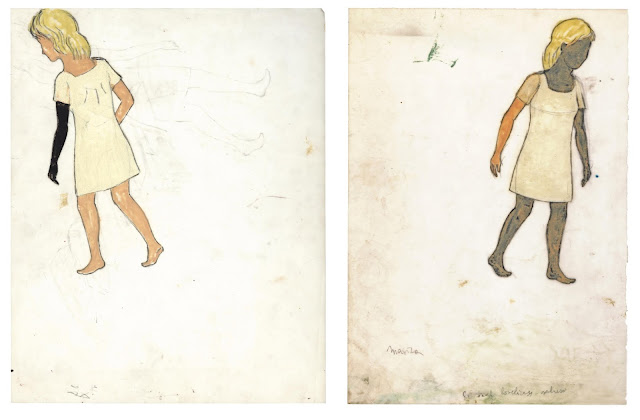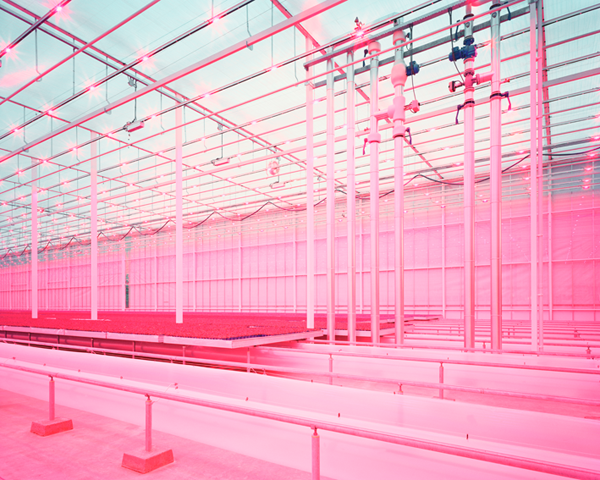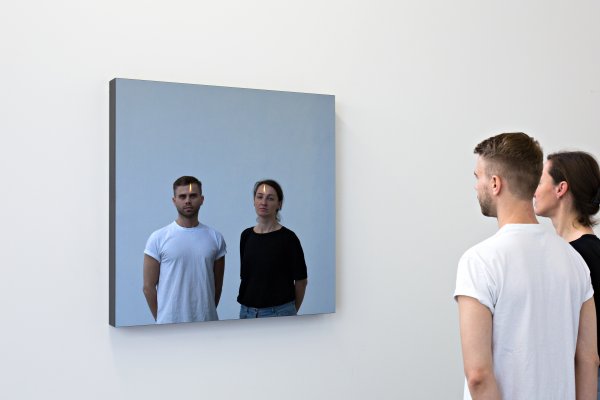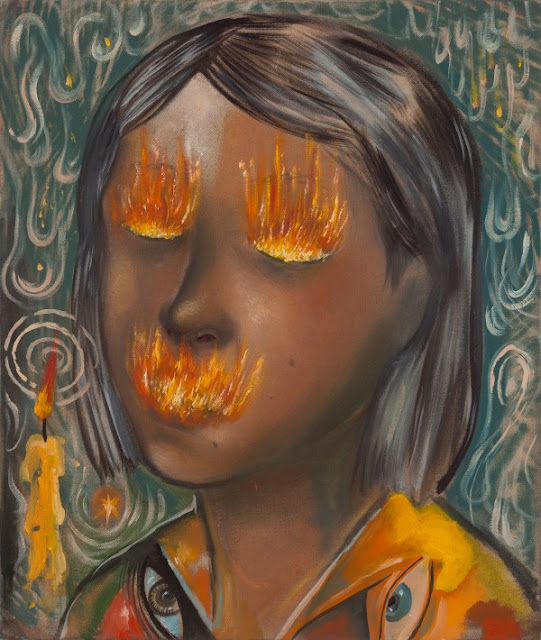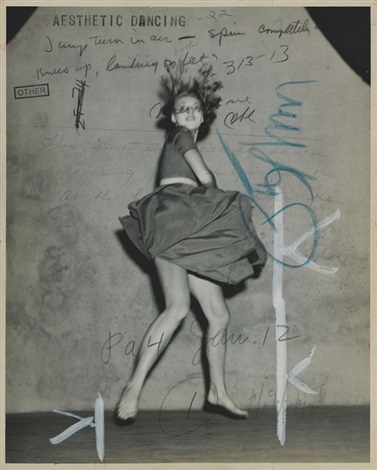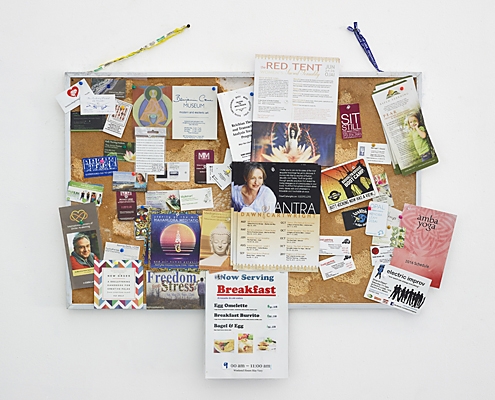Paul Carey-Kent travels to Switzerland to visit Manifesta in Zurich and Art Basel 2016
ZURICH: MANIFESTA, PICABIA, DADA AND THE OVERLOOKED
There’s plenty of interesting stuff in the artfest which is Zurich and Basel this week. Both deliver a winning combination of what you might call big wow and little wow: large-scale highly visible and installations of great immediacy, and quieter, smaller works over a sufficiently self-effacing nature or location such that they won’t have been widely noticed – yet which still carry a charge.
Manifesta – cuarated by artist Christian Jankowski – has a nice simple set-up: everything was based on ‘What People Do For Money’. Jankowski commissioned 30 artists to interact with local professionals from dentist to dog hair stylist to translator to gym instructor: you could see the resulting work at the central venues and visit the professional bases for extras. Maurizio Cattelan and Mike Bouchet got the most PR: Cattelan set up the illusion of a Paralympic athlete wheeling herself across the surface of Lake Zurich; Bouchet made an 80 tonne installation out of one day’s worth of Zurich’s human excrement – somewhat piquant, even in its treated form. Jankowski complemented those projects with lots of extra non-commissioned pieces on related themes.
Jonathan Monk: This Painting Should Be Installed by an Accountant, 2011 – Gold leaf and acrylic on canvas
I wasn’t too surprised that no artist sought to buddy up with my profession of accountancy, though it does seem from Jonathan Monk’s cheeky painting that one of us was involved in the installation. It also serves to illustrate how non-commissioned pieces were set up on scaffolding so you could look around the back and see the work of labelling.
Francis Picabia: Femme aux Allumetes (II), 1924-25 at Kunstaus Zurich
The 200 work Picabia retrospective at the Kunsthaus Zurich was a predictable highlight. His serial switching of styles, wilful perversity, mocking of all camps and embrace of ambiguity engaging and influential. And the works have their own punch beyond that narrative. I’d say there were 20-odd main phases on show: photo-impressionism; his version of Fauve/ expressionist modes; pseudo-cubism; dance abstraction; mechano-morphic portraiture; techno-eroticism (Picabia loved women, cars and art equally); Spanish kitsch; straight portrait drawings; enamel anti-paintings; ancient worlds with fake craquelure; the ‘transparences’ (which layer disparate images over each other); monstrous anti-hedonism; paintings destroyed by paintings; object collage paintings; pseudo-classical realism; anthropomorphic abstraction; late figuration; and the endpoint of dot works. His most-heard quote ‘Our heads are round so our thoughts can change direction’ never seemed more apposite. Femme aux Allumetes (II), 1924-25, is one of a series which ask what is being depicted: the object or what they apparently amount to. Is the subject a woman, with hairgrip eyes and the implicit value of her necklace reduced to small change, or is it mainly a presentation of the implied spark – Picabia is rarely far from the erotic – of the matches. The going rate for a reasonable Picabia at Art Basel? About £2m.

Thomas Wachholz: Ohne Titel (Reibfläche), 2015 at RaebervonStenglin – red phosphorous and binder on wood, traces of ignited matches
RaebervonStenglin’s main show was of a favourite of mine, Andrew Dadson. But the office drew me in too with paintings in which Cologne-based Thomas Wachholz had covered a canvas with printed colour then attempted to paint it off with alcohol. Tucked away round the back of the gallery’s second space was the result of a previous project by Wachholz. The role of the artist is often to get people to do things, and here he had – not without considerable effort – persuaded a manufacturer of matches to cover the whole of a large canvas with the phosphorous used on matchboxes. He then struck on the marks, and the public also got a chance last year in a version on the wall.
Francis Alÿs: Untitled (Two Sisters), 2005-2006 – Diptych, each oil paint and pencil on tracing paper, each 46.5 x 36.5 cm, framed at Galerie Peter Kilchmann, Zurich
An easily missable work by a famous artist was in Peter Kilchmann’s room of stock subsidiary to the main show. This diptych is typical of Francis Alÿs hesitantly poetic paintings, which feel like rehearsals for the real thing – and, indeed, often relate to the film projects they help to fund – yet achieve an icon-like aura which you don’t associate with a mere study. These two sisters give an engaging new spin to the idea of racial harmony achieved by uniformly coffee-coloured people.
Kurt Schwitters: Electric Ha, 1935 at galerie gmurzynska
Zurich was celebrating 100 years since Dada started in the city, hence Museum Reitberg’s the wonderful show of African influences fed through the movement (one highlight being Richard Huelsenbeck and Raoul Haussmann’s sound poems) and galerie gmurzynska’s striking creation of a MERZ-type environment setting 70 works by Kurt Schwitters in amongst Zaha Hadid. That had his famous sound poem Ursonate, 1922–32 and a good selection of the 3,000 collages he made. The smallest was this postage-stamp sized scrap of thought to have come from a Norwegian fishing company. Schwitters, of course, destroys one meaning to create another. Here it is tantalising tricky to guess what phrase ELECTRIC HA might be extracted from, but as presented it seemed to be mocking modernity. Rther desirable, but even at this size, you’d be looking at around £20,000.
Bastian Gehbauer: Cress growing Greenhouse. Monster, The Netherlands 2013
I blundered across the Swiss Photography Awards, which are well off the track, looking for something else which was closed. No matter: I was impressed by the German Bastian Gehbauer: clinically controlled images of unusually well-targeted subjects – I don’t think serendipity would cut it for him. His series ‘Zirkel I’ includes a sperm bank’s nitrogen tank , an automated crematorium, a garage of sorts designed to allow prostitutes to have sex in cars more safely, and this Dutch greenhouse which uses a mixture of blue and red LED diodes to enable cress to grow with minimal sunlight.
BASEL: FROM THE FAIRS
There’s even more art in Basel than in Zurich at the moment. Art Basel, with closing on 300 galleries, is only the third of it given various other fairs, and the many shows around the city, including the Kunstmuseum’s opening of a swanky third building. The highlight was the main fair’s ‘Art Unlimited; section of 88 major projects, which was the best I’ve ever seen it.
Alan Charlton: Wall of 8 Greys, 2016 – acylic on canvas, 3.38 x 19.75m in Art Unlimited
Installations tend to take the most space in Art Unlimited, but there were plenty of competitors for the title ‘biggest painting’, depending on just how you defined a painting. Two multi-part works made a for a remarkable chromatic contrast. Alan Charlton has been making – only – monochromatic grey painting for close on half a century, but this most be the most quietly spectacular, combining 32 canvases in same-coloured columns of four in eight different greys to a total width of 20 metres.
(See Top Photo)
Peter Halley: Weak Force, 2016 – 4 x 18m in Art Unlimited
Peter Halley, on the other hand, has been using fluorescent colours to make his characteristic ‘cells’ and ‘prisons’ since the mid-80’s. Weak Force is an eyeball-searing combination of four multi-panelled paintings set on wallpaper printed with colourful explosions which, says the show text ‘wryly links the sundered histories of geometric abstraction, abstract expressionism and pop, intimating the destruction that underlies the solidity of what we construct’.
Rayyane Tabet: The Dead Sea in Three Parts, 2013 – mixed media, 150 x 300 x 400cm, in Art Unlimited
It’s tough to make work which addresses a political agenda in a manner which doesn’t preach, has some aesthetic impact, and resonates as a work of art. I liked three works which did this. First, Lebanese artist Rayyane Tabet’s ‘The Dead Sea in Three Parts’, modestly-sized by the standards of ‘Art Unlimited’ but nonetheless potent. The Dead Sea in Three Parts is consists of made-to-scale representations of the Dead Sea, as partitioned in 1947: the largest piece – Jordan’s – stands balanced while the West Bank’s and Israel’s parts have fallen away. The topography of instability is captured in the artificiality of division.
Lawrence Abu Hamdan at Mor Charpentier
It’s only logical to follow that with Jordan born, Lebanon-based (but currently Goldsmiths studying) Lawrence Abu Hamdan – and his political work had a practical impact. He investigates sound and politics forensically, and this work shows the evidence behind a murder charge. Left to right above is the audio analysis of live bullet, a live bullet with rubber extension, and a rubber bullet. The artist explains: ‘ as part of Forensic Architecture’s (Goldsmiths College) study for Defence for Children International, Palestine, we looked at cases where Israeli border guards shot to death two teenage boys and then denied the charge against them, claiming that they had only fired rubber bullets. My job was to identify from the sound of the shot if it was in fact live ammunition, or rubber bullet gunfire. An important conclusion from this audio forensic investigation was the identification of a distinct sound that is not a rubber coated bullet sound, nor is it the sound of live fire but rather a confluence of the two. A rubber bullet extension mounted on the soldiers’ rifles ostensibly made them look like they were firing rubber bullets, but the sound of the shots told a different story. The extension suppresses the sound of live ammunition and, to a lesser extent than a silencer, it can be used to disguise the presence of live fire. This is an important sound signature to identify because, coded within this cloaked sound, there is an intention to conceal the act of murder’.
Yngeve Holen: Butterfly, 2015 (two from the series, each aluminium fence, 251 x 151 x 54cm
Yngeve Holen, a rising star of the Berlin art scene, opened his moxt substaintial show yet at Basel’s Kunsthalle during the fair. One room held sections of airport security fencing, bracketed onto the wall to form an adjusted readymade which referenced the modernist grid while calling to mind the refugee crisis undermining current borders. The implied narrative was of breaking through the perimeter, though actually the fence was merely sourced from Frankfurt Airport’s supplier. Holen has cut out six sections in ‘butterfly’ form for sale, and all were on sale in Basel – at Liste (Frankfurt’sNeue Alte Brücke) and Art Basel (at Modern Art and Gallery Neu).
Jeppe Heine: There is Always Someone Else, 2016 – powder-coated aluminium, two-way mirror, powder-coated steel, two candles at Galleri Nicolai Wallner
Danish artist Jeppe Heine was responsible for the Appearing Rooms fountains which have become a regular South Bank feature in London, and he has often made comparably crowd-pleasing use of mirrors. Here a simple trick leads to a seemingly trancendental effect: the cabinet unit can be opened from the side in order to make the necessary seven hourly change of the candle which viewers see through a two way mirror, so plotting it onto their reflections.
Jakub Julian Ziolkowski: Candle Girl, 2016 – oil on canvas, 40 × 34 cm at Foksal Gallery Foundation
Polish painter Jakub Julian Ziolkowski is currently producing his fantastical canvases in Vietnam, staying on following a project there. Wherever he is, Ziolkowski has said ‘I don’t know where it all comes from’, but obviously it wasn’t from looking into Heine’s mirror. ‘Bosch-meets-Ensor’ is Jerry Selz’s summary, spot on for this flaming vision.
Thomas Ruff: Press ++3042, 2015
Thomas Ruff continues to come up with new strategies to challenge the conventional documentary expectations of photography while not taking any photographs himself. His latest, ‘‘Press’ series is very much in the zone of Picabia’s ‘transparences’: he blows small analogue press photographs of various subjects up to poster size, and prints the reverse of the card – labels, totes, technical specifications etc – onto the front as well, so enriching the image with a sort of functional graffiti which tugs the tail of the eternal problem that extra information may obscure as much as it reveals.
Anri Sala: Lines recto verso (Jung, Huxley, Stravinsky), 2015 – Graphite, coloured pencil and eraser on either side of Chinese paper, 139 x 139cm at Gallery Alfonso Artiaco
Anri Sala, best known for film and installation, made Lines recto verso (Afif, Sala, Flavien) (2015) by tracing the palm patterns on the hands of himself and two artist friends into a comparable linked shape, using Chinese paper so that the double tracing, front and back, of these left hands can be seen, a reference to the slippages between versions of Sala’s Ravel Ravel (2013) where two different interpretations of Ravel’s Left Hand Concerto for Piano and Orchestra are heard alongside one another. Building on that typical combination of simple and complex, a second such drawing featured the lines from another empathetic set of contemporaries: Stravinsky, Jung and Aldous Huxley.
Fiona Connor: Community Notice Board (One Life), 2016 corkboard, silkscreen and UV print on aluminium plates, vinyl, wire, pins, tape, staples
Finally, one way of being overlooked is not to look like art. New Zealand gallery Hopkinson Mossman achieved that entertaining fair trick at the young gallery fair Liste by placing a plausible-looking well-aged notice board in the corridor just outside their room. Only when you saw similar work in their space were you drawn into the discovery that New Zealand artist Fiona Connor made all the components herself, including printing the original paper elements pinned to the board in aluminium. This, then, was art about attending afresh freezing time. Connor also plays off a long tradition of related noticeboard deception, from Cornelius Gijsbrechts and Edward Collier to Ryan Gander, Hany Armanious and Lucy Mackenzie.

